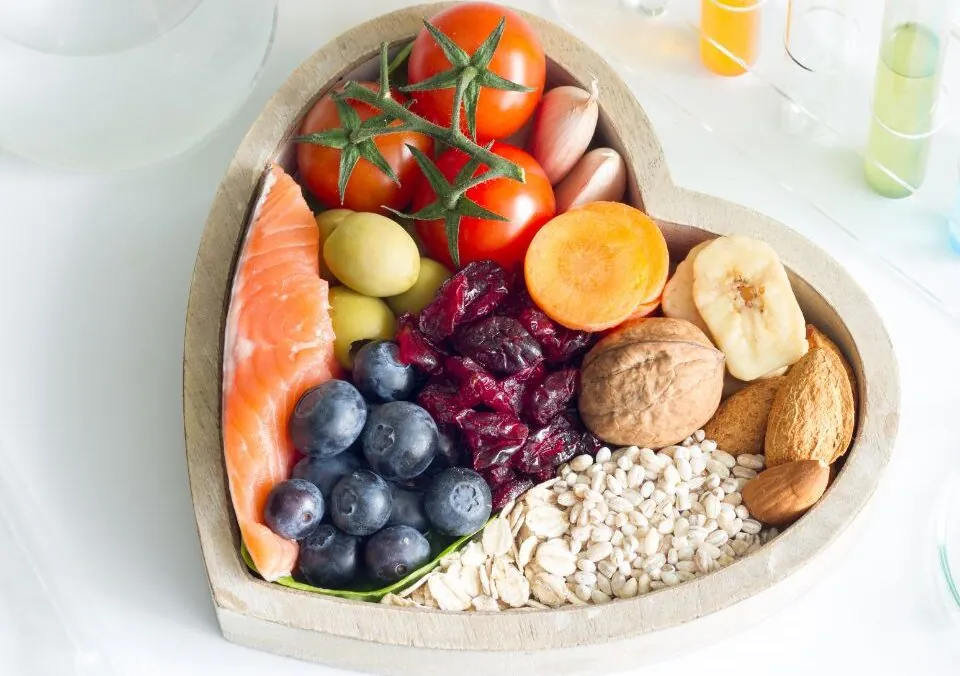Blog
Healthy Eating for a Vibrant Life

Eating well is a fundamental aspect of leading a healthy and vibrant life. Healthy eating is about balance and diversity. Living in Arizona makes this easier with its plentiful year-round farmer’s markets providing fresh, in-season produce, and farm-direct beef, eggs, and dairy. Plus, our local grocery stores carry an abundance of Arizona’s local foods, especially dairy and our protein meats such as beef.
The food we consume isn’t just fuel; it influences not only our physical health but also our mental well-being. By focusing on nutritious, whole foods and making suitable lifestyle changes, we can enrich our lives and improve our overall quality of existence. In this guide, we’ll explore various facets of healthy eating, such as local food sources, balanced diets, and the importance of making informed choices.
Understanding Local Foods
One of the most effective ways to improve your health is by incorporating local foods into your diet. In states like Arizona, we have access to a wealth of local produce, dairy, and high-quality protein sources. Exploring your local grocery stores can uncover a treasure trove of healthy options, including fresh fruits, vegetables, and dairy products that are often more nutrient-dense than their mass-produced counterparts.
Local produce is not only fresher but also contains more nutrients because it is harvested at its peak ripeness and travels less distance from the farm to your table. Additionally, supporting local farmers and suppliers strengthens your community and contributes to the local economy.
For example, local farmers’ markets often provide seasonal fruits and vegetables that are not only cost-effective but also immensely flavorful. Check your local listings to find out when and where these markets are held. You can also explore websites like LocalHarvest to find farmers’ markets, family farms, and other sources of sustainably grown food in your area.
Transform Your Diet with Smart Eating
When it comes to transforming your diet, it’s essential to approach change thoughtfully. Instead of undergoing an extreme overhaul, introduce gradual improvements that will help you adopt smarter eating habits over time. Studies show that our dietary choices play a crucial role in lowering the risk of chronic diseases like cancer, diabetes, and heart disease, while also enhancing our energy levels, mood stability, and weight management.
Here are some practical tips to guide you through implementing better eating habits effectively:
Healthy Tip #1: Plan for Success
Planning is one of the cornerstones of successful dietary changes. Here are some tips to help you create a successful eating plan:
- Set realistic goals: Aim for small, achievable changes instead of drastic transformations. For example, try adding one vegetable serving to your dinner or swapping a sugary snack for a piece of fruit.
- Choose quality over quantity: Focus on the nutritional quality of the foods you consume. Integrate more fruits and vegetables into your meals and snacks. You might start with simple swaps, like replacing chips with carrot sticks or popcorn with a handful of nuts.
- Utilize color and variety: Make your plate a canvas. Colorful meals are often more nutritious. Aim for a rainbow of foods: leafy greens, vibrant reds, and yellow or orange vegetables.
- Plan meals and snacks ahead of time: Prepare a week’s worth of meals in advance to avoid impulse decisions when hunger strikes. Websites like Eat This, Not That offer excellent meal-planning tips and recipes to help you get started.

Healthy Tip #2: Enjoy Your Food
Healthy eating should be an enjoyable experience, not a chore. Here are some ways to enhance your mealtime experience:
- Make meals visually appealing: Create plates that are pleasing to the eye. Use a variety of colors, shapes, and textures. You could incorporate whole grains, colorful vegetables, and lean proteins to make your meals more interesting.
- Share meals with others: Eating is often a social activity; it’s more enjoyable to share your food with family and friends. Invite loved ones over for a healthy meal or prepare dishes together.
- Start your day with a nutritious breakfast: Breakfast is considered the most important meal of the day—it sets the tone for your entire day. Think about incorporating whole grains, fruits, and a protein source to fuel your morning. This might mean opting for oatmeal topped with berries or a smoothie packed with greens and fruit.
Healthy Tip #3: Eat the Rainbow
Fruits and vegetables are essential to any healthy diet. They provide the vitamins, minerals, and antioxidants that your body needs to thrive:
- Greens: Dark leafy greens are packed with vitamins (such as Vitamin K) and minerals. They’re known for their blood health-boosting properties and can include spinach, kale, and collard greens. Learn more about their benefits in our recent blog post.
- Colorful fruits: Different colors correspond to different nutrients. For instance, berries are rich in antioxidants and vitamins, and citrus fruits like oranges and lemons can boost your immune system with their high Vitamin C content.
- Sweet vegetables: Sweet potatoes, carrots, and squash can satisfy your sweet cravings while providing essential nutrients without relying on processed sugar.
When shopping for fruits and vegetables, aim to buy local and seasonal produce. This not only maximizes nutritional benefits but also supports local agriculture and ensures that you consume the freshest ingredients available.
Healthy Tip #4: Choose Healthy Carbohydrates
Carbohydrates are often misunderstood. It’s crucial to differentiate between healthy and unhealthy carbs:
- Opt for whole grains: Whole grains such as brown rice, quinoa, and barley are far better than their refined counterparts. They contain fiber which aids digestion and keeps you feeling full longer, helping to prevent blood sugar spikes and crashes.
- Include legumes and beans: These are fantastic sources of plant-based protein and carbohydrates that digest slowly. Not only are they nutrient-dense, but they are also versatile and can easily be incorporated into various dishes.
- Moderation is key: While it’s important to include carbohydrates in your diet, they should be balanced with protein and healthy fats. A plate that includes a serving of grains, protein, and plenty of vegetables offers balanced nutrition.
Healthy Tip #5: Include Protein
Protein is essential for body repair and energy. Making mindful choices about your protein sources can lead to significant health benefits:
- Choose high-quality meats: Look for lean cuts of meat like chicken or turkey, and choose grass-fed or sustainably raised beef when possible. Consider local sources by visiting your farmers’ markets or local butchers who prioritize quality.
- Plant-based proteins: Incorporate legumes, beans, lentils, and tofu into your diet. Plant-based proteins are not only rich in fiber but are also lower in saturated fats than animal proteins.
- Healthy snacks: Nuts and seeds are excellent, portable snacks that can provide protein. They also contain healthy fats that promote heart health. Consider adding a handful of almonds or walnuts as a snack to keep hunger at bay.
Remember, healthy living is not solely about individual choices; it involves adopting a lifestyle that supports your overall well-being. Taking the time to figure out what works best for you and your family can lead to lasting change.
Additional Considerations
In addition to a balanced diet, there are other factors to consider when pursuing a healthy lifestyle:
Hydration
Proper hydration is absolutely vital for maintaining energy levels and overall health. Water performs numerous functions in our bodies, from regulating body temperature to aiding in digestion.
- Set a daily water goal: Aim for at least eight 8-ounce glasses of water a day or more depending on your activity level.
- Add flavor: If plain water isn’t appealing, consider adding slices of fruit or herbs like mint or basil to infuse flavor naturally.
- Stay mindful of drinks: Be cautious with sugary drinks (like sodas and sweetened teas) that can significantly contribute to calorie intake without providing essential nutrients. Instead, opt for herbal teas or water flavored with citrus or berries.
Regular Exercise
Diet and exercise go hand in hand. Regular physical activity not only supports weight management but contributes to improved mental health and overall well-being:
- Aim for balance: Incorporate cardiovascular exercise, strength training, and flexibility workouts into your weekly routine. Find activities you enjoy, whether it’s dancing, hiking, or joining a group fitness class.
- Make it social: Exercise doesn’t have to be solitary. Join groups, invite friends, or participate in community events to stay motivated and maintain accountability.
- Prioritize movement: Even small changes can make a difference. Opt for stairs instead of the elevator, walk during breaks, or park further away from your destination.
Conclusion
Adopting a healthier lifestyle through well-informed dietary choices and habits is entirely achievable. Healthy eating and living are about making gradual, thoughtful changes that can sustain over time. It requires understanding food sources, planning meals, and integrating nutritious foods into your diet in enjoyable ways.
By focusing on local, seasonal foods, embracing vibrant colors in your meals, and considering your hydration and exercise, you can create a nourishing environment for both your body and mind. Remember, it’s the small, consistent steps that collectively lead to a vibrant, healthy life.
For more tips on healthy eating and wellness, explore resources like ChooseMyPlate.gov which offers helpful guidelines on nutrition, meal planning, and maintaining an active lifestyle.
By investing in your health and well-being, you can enjoy all the benefits of a vibrant life!


















